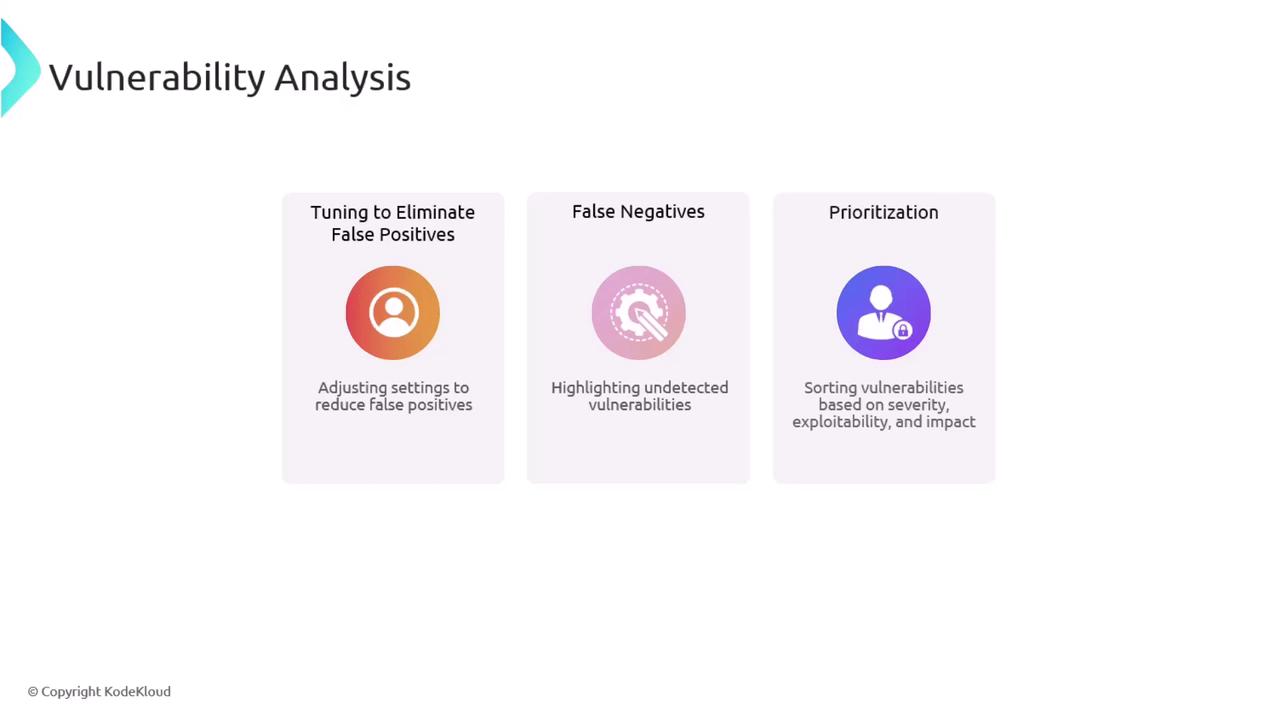CompTIA Security+ Certification
Security Operations
Vulnerability Analysis
After identifying potential vulnerabilities, the next crucial step is to conduct a detailed analysis. During this stage, it's important to understand two key concepts: false positives and false negatives.
Note
A false positive is a vulnerability that appears in a scan report but does not truly represent a security threat. For example, a system or firewall may intentionally keep certain ports open, which scanning tools might incorrectly flag as a vulnerability.
Since investigating false positives can consume valuable resources, it is essential to fine-tune your vulnerability scanning software to minimize such occurrences during subsequent scans.
Warning
False negatives are even more concerning, as they represent vulnerabilities that the scan failed to detect. Missing these can leave your system exposed to potential attacks. Thus, besides reducing false positives, tuning your scanner to detect false negatives is critical.
Once the scan results are reliable, prioritize the vulnerabilities to ensure that your remediation efforts focus on the most critical issues first. When prioritizing, consider the following factors:
- Severity of the vulnerability
- Ease of exploitation
- Potential impact if exploited
The diagram below illustrates the primary components involved in vulnerability analysis:

For a standardized approach to assessing the criticality of vulnerabilities, many organizations rely on the Common Vulnerability Scoring System (CVSS). CVSS evaluates vulnerabilities on a scale of 0 to 10, with 10 signifying the highest risk. This scoring system uses a combination of metrics and formulas, which assists in prioritizing mitigation efforts when multiple vulnerabilities are present.
Additionally, the exposure factor (EF) quantifies how susceptible a vulnerability is to exploitation. By integrating both the CVSS score and the exposure factor, organizations can make informed, timely decisions to address vulnerabilities effectively.
Watch Video
Watch video content